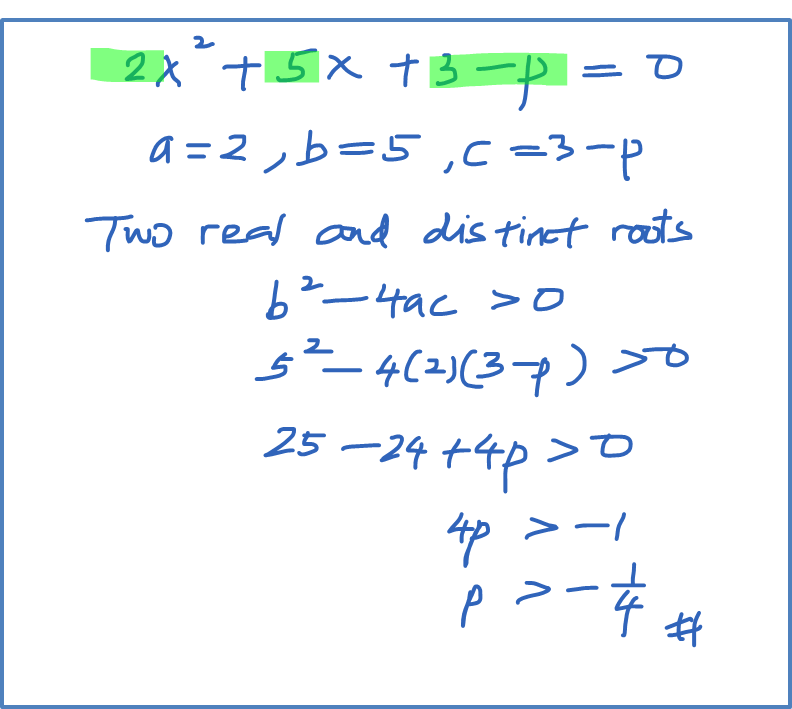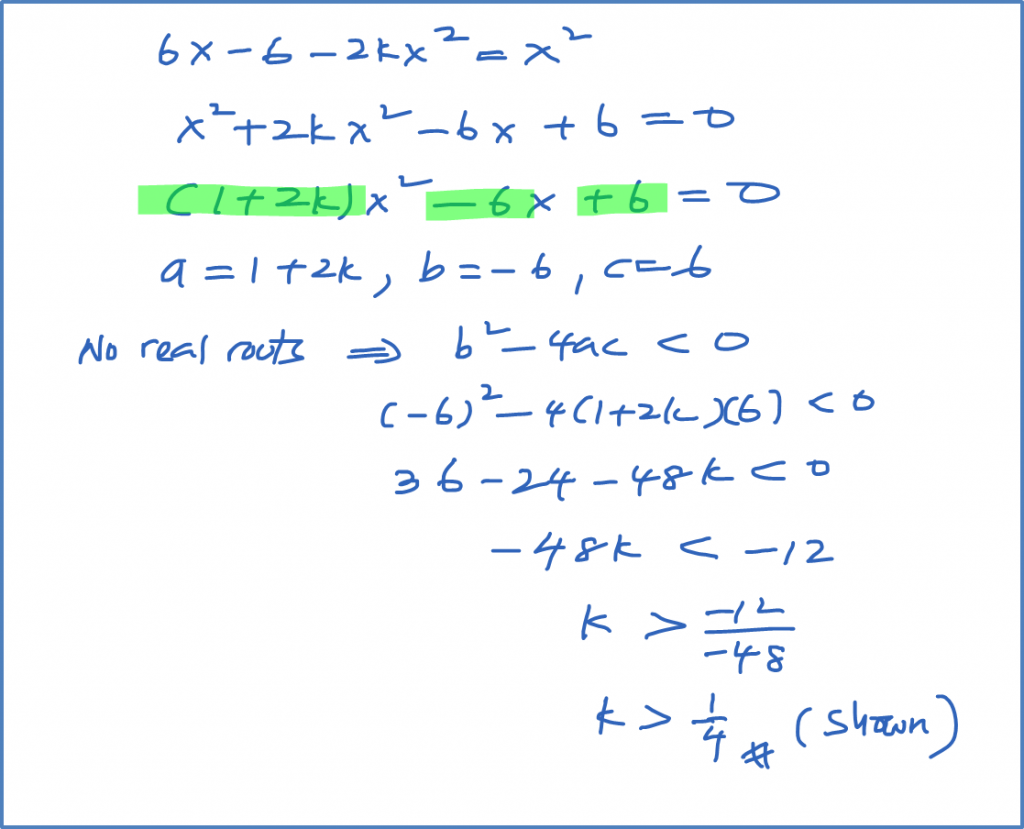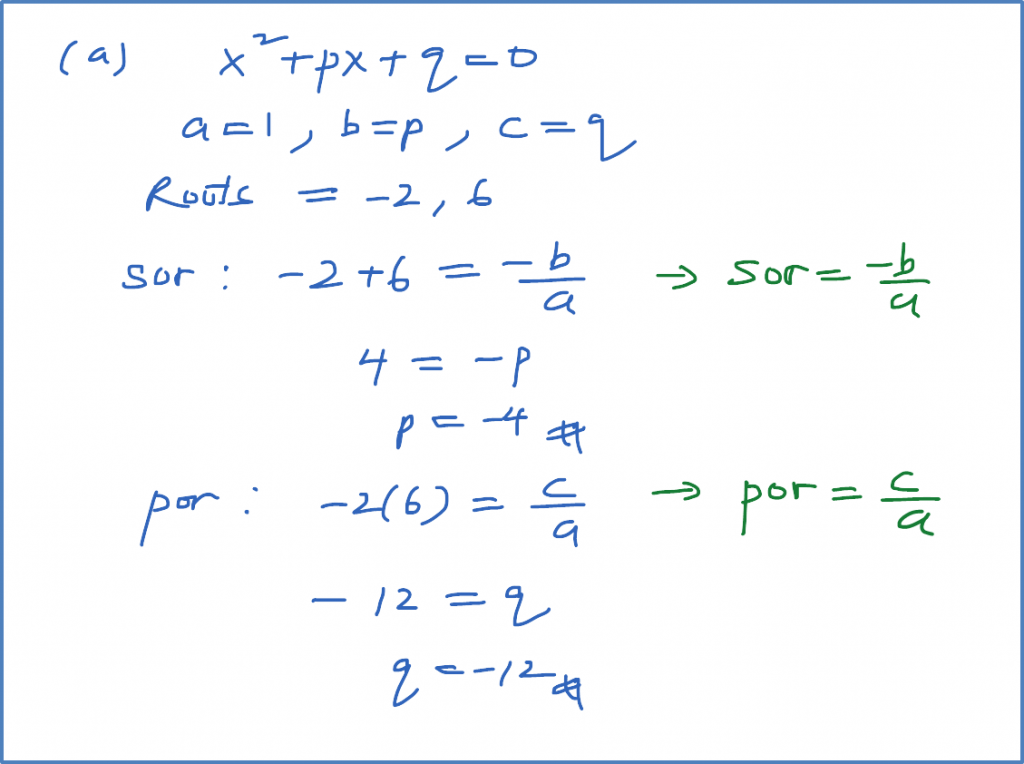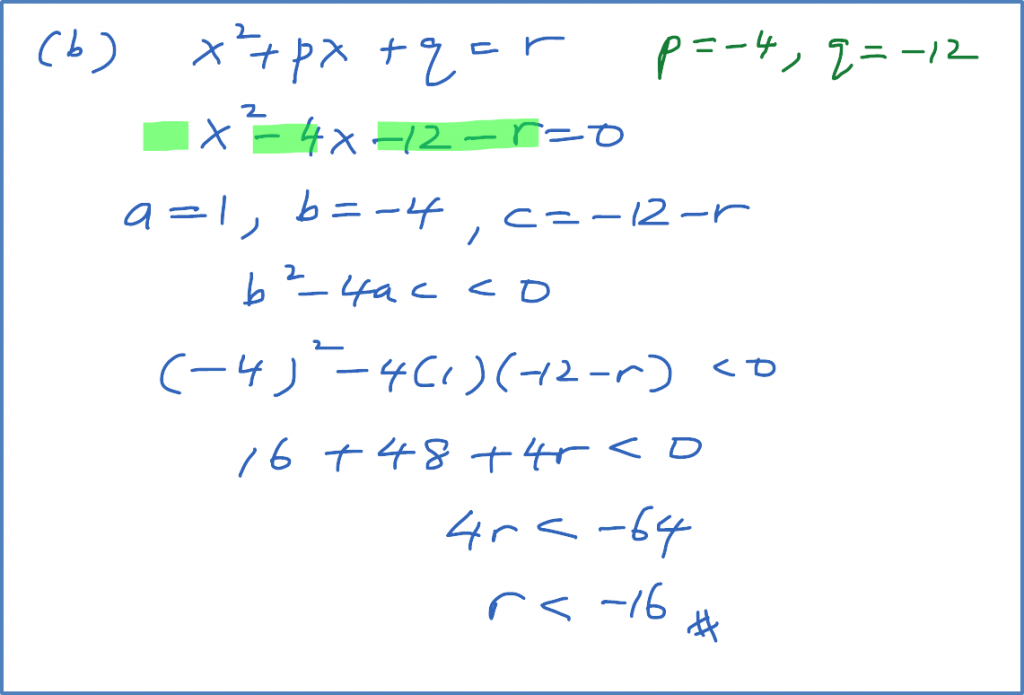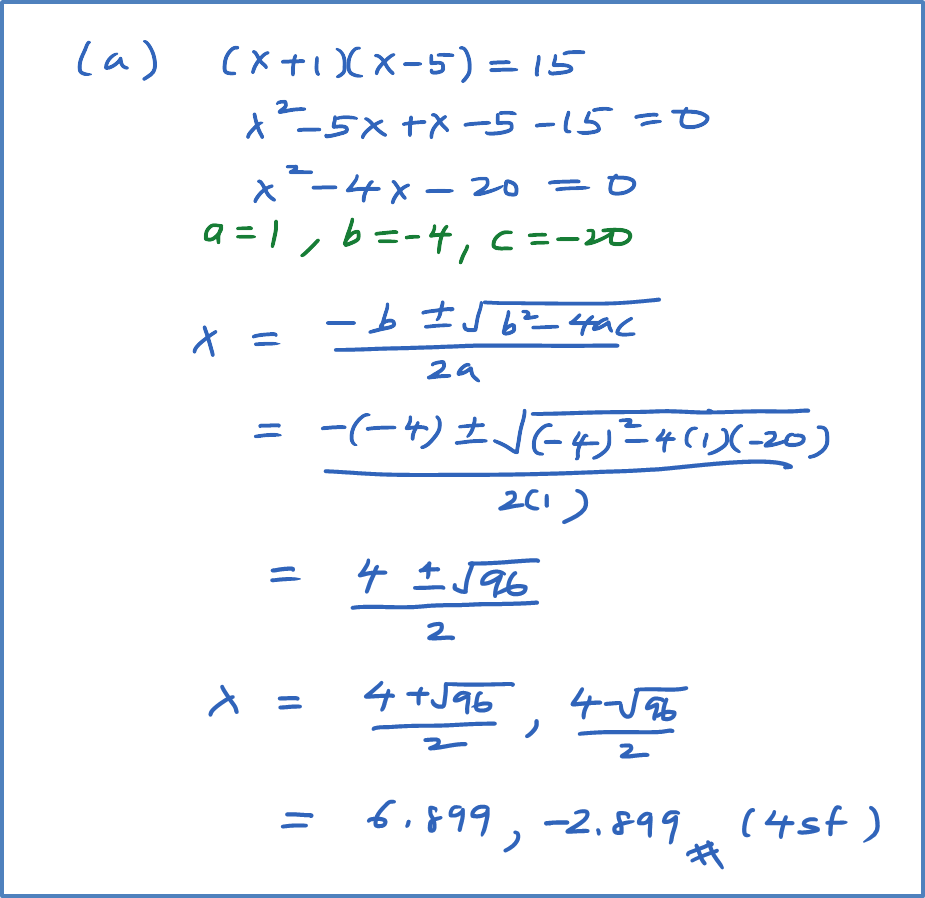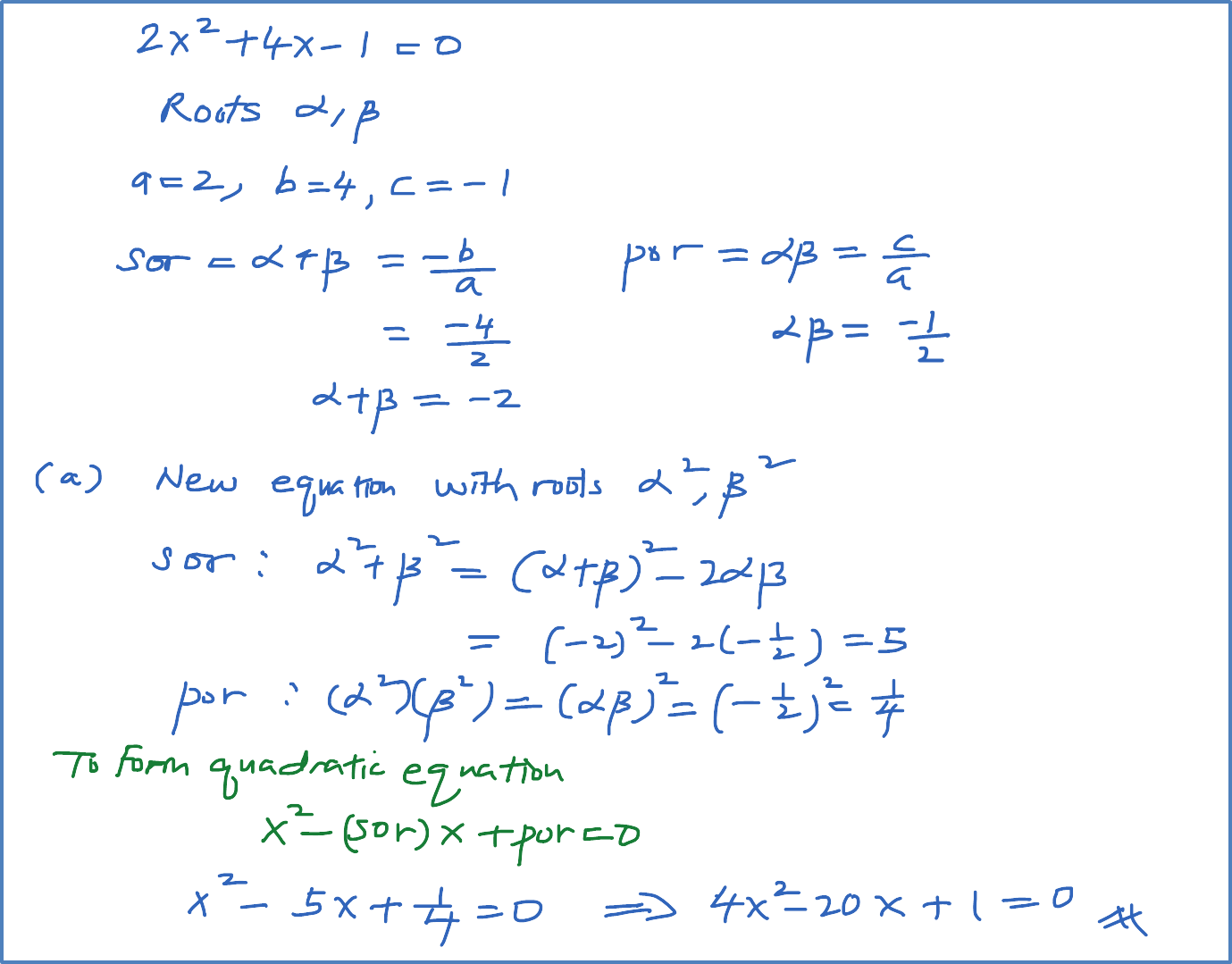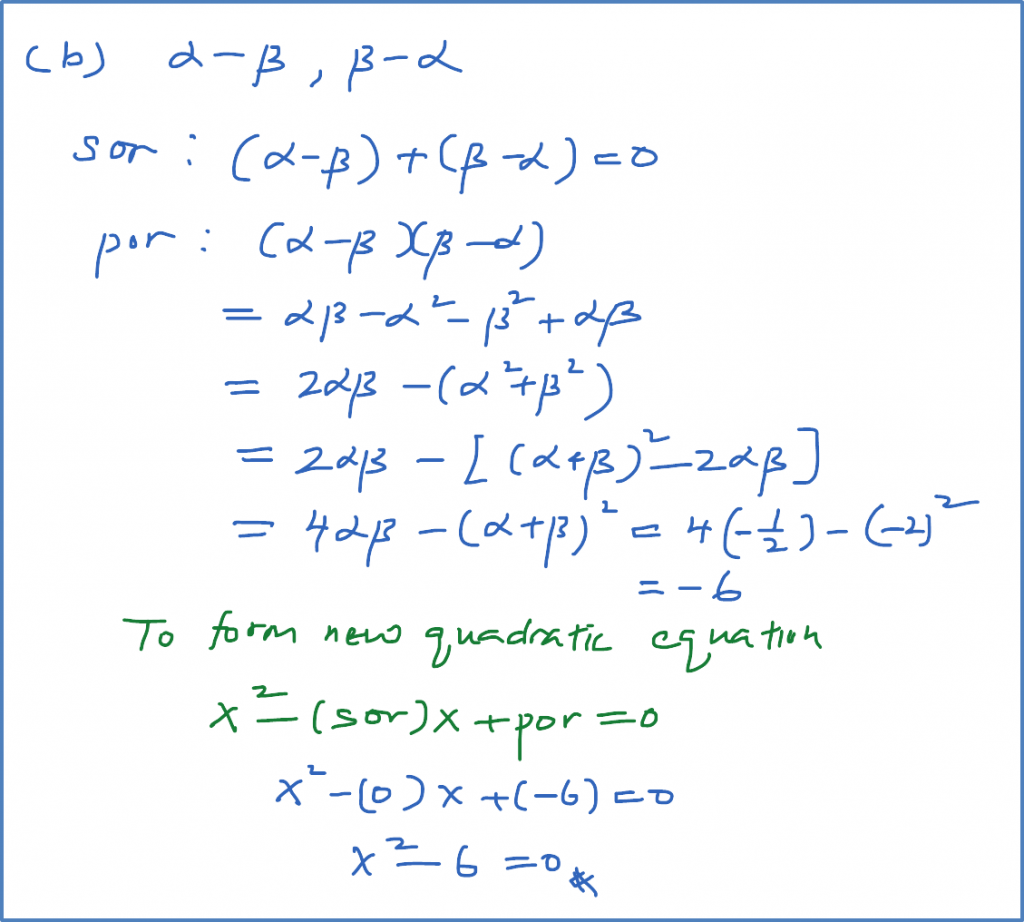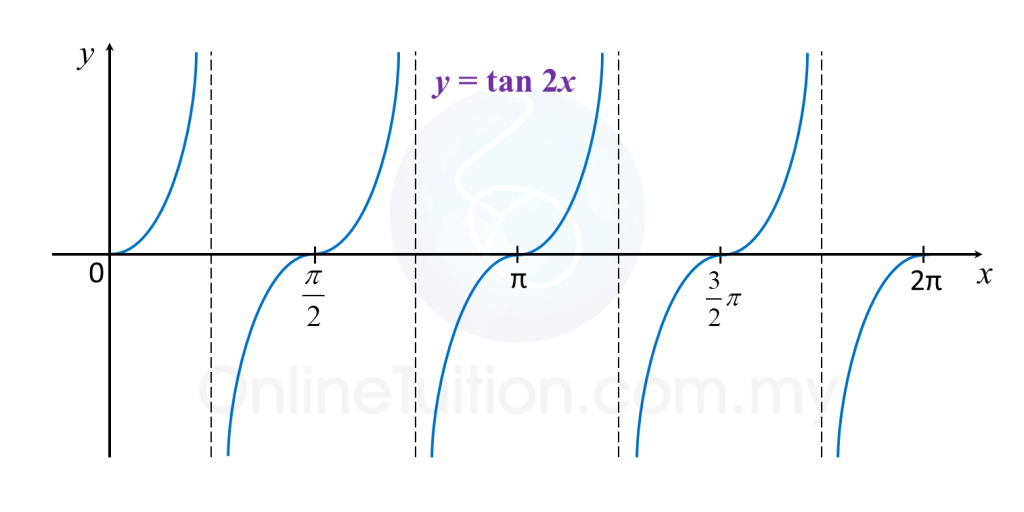Question 9:
The roots of the equation 6x2+hx+1=0 are α and β, whereas 3α and 3β
are the roots of the equation 2x2−x+k=0
. Find the value of h and k.
Solution:
6x2+hx+1=0a=6, b=h, c=1Roots=α,βsor:α+β=−baα+β=−h6.........(1)por:αβ=caαβ=16.........(2)2x2−x+k=0a=2, b=−1, c=kRoots=3α, 3βsor:3α+3β=−ba3(α+β)=−(−1)2α+β=16.........(3)por:3α(3β)=ca9αβ=k2k=18αβ.........(4)Substitute (3) into (1)α+β=−h616=−h6h=−1Substitute (2) into (4)k=18αβk=18(16)k=3
Question 10:
Find the range of values of
p for which the equation
2x2+5x+3−p=0
has two real distinct roots.
Solution:
